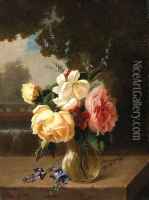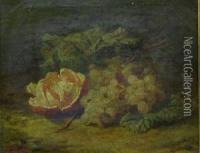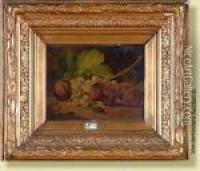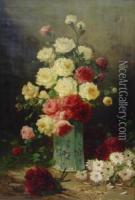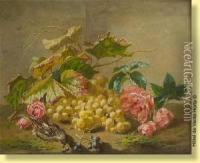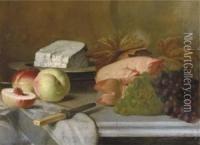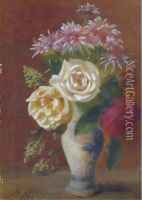Henri Robbe Paintings
Henri Robbe was a Belgian still-life painter born on January 27, 1807, in Courtrai, Belgium. Noted for his detailed and richly colored still life compositions, Robbe's work is often characterized by its vibrant depiction of flowers and fruits, as well as by the inclusion of porcelain and glass objects which reflect his precise and meticulous approach to painting.
Robbe was initially taught by his father, who was an amateur artist, before moving to Brussels to study under the history painter François-Joseph Navez. Navez was a pivotal figure in the Belgian neoclassical painting tradition, and his influence is evident in Robbe's early works. However, Robbe found his true calling in still-life painting, a genre that allowed him to express his love for detail and composition.
Throughout his career, Henri Robbe enjoyed considerable success and was appreciated by collectors and critics alike. His paintings often featured opulent arrangements of flowers, sometimes accompanied by fruits, on marble or stone ledges, which demonstrated his skill in capturing textures and light. Unlike the stark sobriety of some of his contemporaries, Robbe's paintings are remarkable for their lush and somewhat romantic approach to still life.
Henri Robbe's style evolved over the years, showing a greater influence of Romanticism and later the rich color palette of the Baroque. Despite the shifts in artistic trends throughout the 19th century, Robbe remained steadfastly dedicated to the still-life genre, helping to elevate its status within the hierarchy of academic painting.
Robbe's work was exhibited in various salons and exhibitions, and he gained a reputation that extended beyond Belgium. His meticulous brushwork and the clarity of his compositions have continued to garner appreciation from art historians and collectors.
Henri Robbe passed away on May 31, 1899, in Brussels. Today, his works can be found in several museums and private collections, serving as a testament to his contribution to the still-life painting tradition in the 19th century. Robbe's legacy continues to be celebrated for its technical mastery and its celebration of beauty in the everyday.
